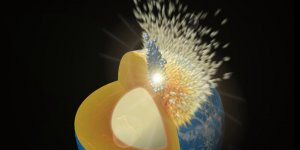| News / Science News |
LatAm's largest gene bank unveiled in Brasília
Agência BRASIL | APRIL 27, 2014
As it celebrated its 41st anniversary Thursday (Apr. 24), the Brazilian Agricultural Research Corporation (Embrapa) unveiled the largest genetic repository in Latin America, which can store up to 750,000 seed samples.
That places Brazil among the three countries with the world's largest gene stocks in the world, behind only the United States and China.
With an area of 2,000 square meters, the new facility has cost around $5.85 million.
In addition to vaults to store seed at minus 20° Celsius, it includes laboratories, in vitro storage rooms, liquid nitrogen tanks, and animal and microorganism DNA samples.
The new repository will store plant, animal and microorganism stocks at the Embrapa Genetic Resources & Biotechnology unit in Brasília for the chief purpose of ensuring food security. Moreover, Embrapa's old stock of over 124,000 seeds will relocate to the new facility.
YOU MAY ALSO LIKE




